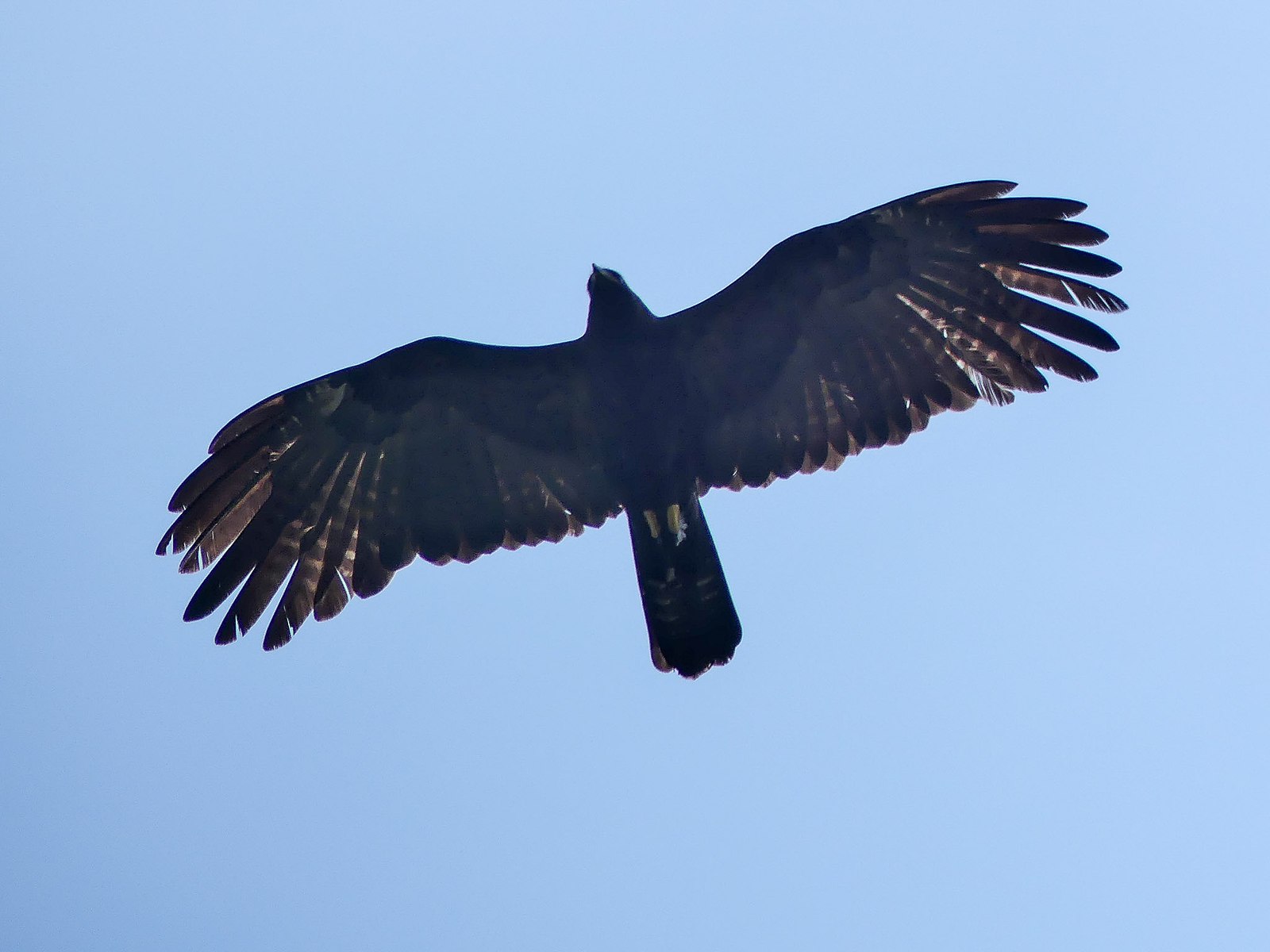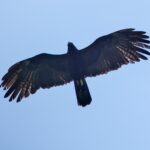Black eagles, also known as serpent eagles, are diurnal raptors, which means they actively hunt during daylight hours and rest at night. They are not known to be nocturnal hunters. Black eagles primarily feed on snakes, lizards, and small mammals, which they locate and capture during the day.
Do Black Eagles Hunt at Night?
No, black eagles do not hunt at night. They are diurnal birds of prey, meaning they are active and hunt during the day. Black eagles rely on their keen eyesight and excellent flying abilities to locate and capture their prey, which they do not possess at night.
Hunting Behavior of Black Eagles
 Image source: Black Eagle by Mike Prince
Image source: Black Eagle by Mike Prince
Black eagles are skilled hunters that use a variety of techniques to catch their prey. They are known to soar high in the sky, scanning the ground below for any movement or signs of potential prey. When they spot a target, they will dive down swiftly, using their sharp talons to capture the animal.
In addition to soaring and diving, black eagles also employ a technique called “still-hunting.” This involves perching on a high vantage point, such as a tree or rock, and patiently waiting for prey to come within range. Once the prey is spotted, the eagle will launch itself into the air and swoop down to make the capture.
Prey of Black Eagles
Black eagles are opportunistic predators and have a diverse diet. Their primary prey includes:
- Snakes: Black eagles are particularly adept at hunting and capturing snakes, which make up a significant portion of their diet.
- Lizards: Smaller lizard species are also a common prey item for black eagles.
- Small mammals: Black eagles will hunt small rodents, such as rabbits, hares, and ground squirrels.
- Birds: On occasion, black eagles may also prey on smaller bird species.
Hunting Adaptations of Black Eagles
Black eagles have several physical and behavioral adaptations that make them successful hunters:
-
Keen Eyesight: Black eagles have excellent eyesight, which allows them to spot prey from great distances. Their eyes are positioned on the front of their heads, providing them with binocular vision and depth perception, which is crucial for hunting.
-
Powerful Talons: Black eagles have strong, sharp talons that they use to capture and kill their prey. These talons are capable of piercing the tough skin and scales of snakes and other reptiles.
-
Agile Flight: Black eagles are skilled flyers, capable of executing sharp turns and dives to catch their prey. Their large wings and powerful flight muscles allow them to soar effortlessly and maintain control during high-speed pursuits.
-
Hunting Strategies: As mentioned earlier, black eagles employ a variety of hunting techniques, such as soaring, diving, and still-hunting, to increase their chances of success.
Habitat and Distribution of Black Eagles
Black eagles are found in various parts of Africa, Asia, and Europe. They prefer to inhabit areas with a mix of open and forested habitats, such as savannas, grasslands, and woodlands. These environments provide them with ample opportunities to spot and capture their prey.
Conservation Status of Black Eagles
The black eagle is classified as a Least Concern species by the International Union for Conservation of Nature (IUCN). However, their populations are threatened by habitat loss, hunting, and persecution. Conservation efforts, such as protecting their natural habitats and reducing human-wildlife conflicts, are crucial to ensuring the long-term survival of these magnificent birds of prey.
Conclusion
In conclusion, black eagles are diurnal raptors that do not hunt at night. They are skilled hunters that rely on their keen eyesight, powerful talons, and agile flight to capture a variety of prey, including snakes, lizards, and small mammals. While they are not nocturnal, black eagles play an important role in the ecosystems they inhabit, and their conservation is crucial to maintaining the balance of these natural environments.
Reference:
– Black Eagle (Ictinaetus malaiensis) – BirdLife International
– Black Eagle (Ictinaetus malaiensis) – The IUCN Red List of Threatened Species
– Black Eagle (Ictinaetus malaiensis) – Animal Diversity Web

